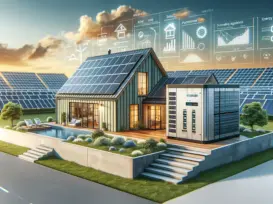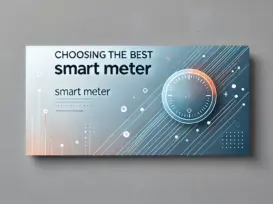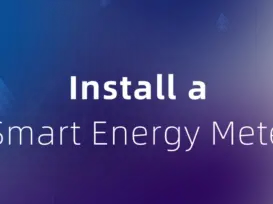Grus Home Energy - Smart Grid
Unveiling the Future of Electricity: How Smart Grid Technology Revolutionizes Power Management
Unveiling the Future of Electricity: How Smart Grid Technology Revolutionizes Power Management
Imagine a world where the electricity grid is not just a passive infrastructure for delivering power but an intelligent network capable of two-way communication, self-healing, and adapting in real-time. This vision is rapidly becoming a reality with the advent of smart grid technology, heralding a new era in the way we produce, distribute, and consume electricity.
A smart grid infuses the traditional electricity grid with information and communication technology, making it ‘smart’ in the same way smartphones revolutionized telecommunications. At its core, the smart grid is about adding an overlay of digital intelligence to the existing physical infrastructure, enabling a host of benefits that were previously unattainable.
One of the key advantages of smart grids is enhanced reliability and resilience. By integrating advanced sensors and monitoring devices, the smart grid can predict and swiftly respond to system disturbances, reducing the frequency and duration of power outages. In the event of disruptions such as severe weather or technical faults, a smart grid can reroute power, isolate problem areas, and even initiate self-repair processes to restore electricity faster than ever before.
Another significant benefit is the efficient integration of renewable energy sources. As the world moves towards greener solutions to combat climate change, the intermittent nature of renewable energy poses a challenge to the traditional grid. Smart grids facilitate the seamless incorporation of energy from solar, wind, and other renewables by managing fluctuations and ensuring a stable energy supply. This is essential for reducing carbon emissions and achieving a sustainable energy future.
Smart grids also empower consumers to play a more active role in energy management. With the deployment of smart meters and real-time data analytics, consumers gain greater insight into their electricity usage patterns. This not only promotes energy conservation but also enables dynamic pricing, where consumers can take advantage of lower electricity rates during off-peak hours. Such demand response initiatives help balance the load on the grid, preventing overburdening the system and averting potential blackouts.
Moreover, the smart grid opens the door to the widespread adoption of electric vehicles (EVs). By acting as an intelligent platform, it can manage the charging of EVs in a way that minimizes strain on the grid. This is essential as EVs become more prevalent, ensuring that our power infrastructure can support the increased demand without compromising performance.
Cybersecurity is another critical aspect of smart grid technology. As grids become more connected and reliant on digital networks, they also become more vulnerable to cyberattacks. Smart grid developers are continually addressing these risks by incorporating robust security measures to protect the grid and the data it carries.
In conclusion, smart grid technology is not just an upgrade to our existing electricity infrastructure; it’s a transformative approach that redefines how we interact with energy. From enhancing grid reliability to enabling green energy solutions and giving consumers more control, smart grids represent a convergence of efficiency, sustainability, and innovation. As this technology continues to evolve, it promises to lay the foundation for a resilient, eco-friendly, and consumer-centric energy ecosystem that will power our lives well into the future.
©2025 All Rights Reserved. Grus IoT Co.,Ltd.


